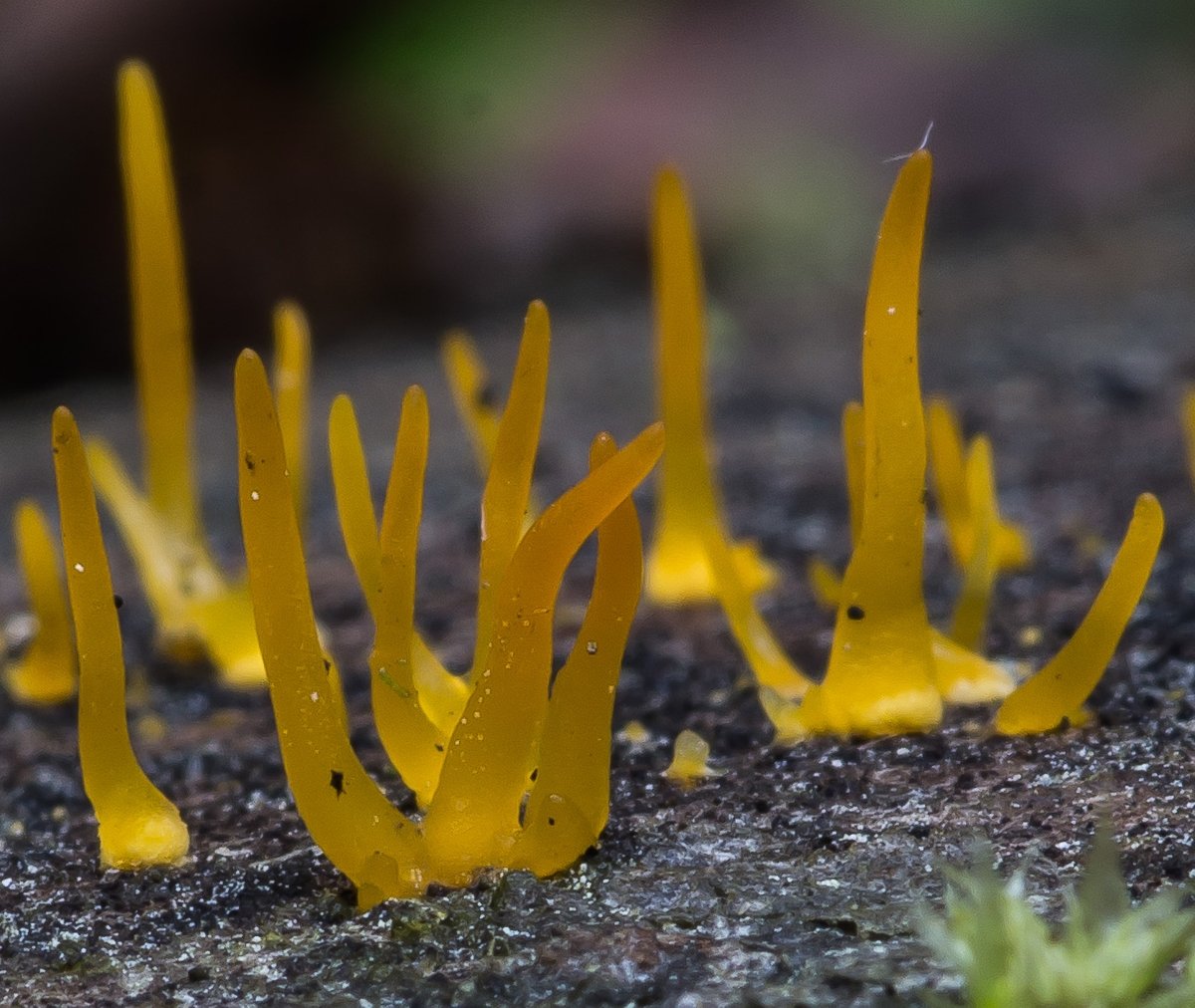Horn-shaped calocera (Calocera cornea)
- Division: Basidiomycota (Basidiomycetes)
- Subdivision: Agaricomycotina (Agaricomycetes)
- Class: Dacrymycetes (Dacrymycetes)
- Subclass: Incertae sedis (of uncertain position)
- Order: Dacrymycetales (Dacrymycetes)
- Family: Dacrymycetaceae
- Genus: Calocera (Calocera)
- Type: Calocera cornea (Calocera horn-shaped)

Calocera hornform (lat. Calocera cornea) is a species of basidiomycotic fungi (Basidiomycota) of the dacrimycete family (Dacrymycetaceae).
fruiting body:
Horn- or club-shaped, small (height 0,5-1,5 cm, thickness 0,1-0,3 cm), isolated or fused at the base with others, then, as a rule, not branching. Color – light yellow, egg; may fade to a dirty orange with age. The consistency is elastic gelatinous, rubbery.
Spore powder:
White (colorless spores). The spore-bearing layer is located on almost the entire surface of the fruiting body of the fungus.
Spread:
Horn-shaped calocera is an inconspicuous fungus, common everywhere. It grows on damp, thoroughly rotten wood of deciduous, less often coniferous species, from mid or late July to November itself (or until the first frost, whichever comes first). Due to the general inconspicuousness and uninteresting for a wide range of lovers, information on the timing of fruiting may not be entirely accurate.
Similar species:
Literary sources compare Calocera cornea with close but less common relatives like Calocera pallidospathulata – it has a light “leg” on which spores are not formed.
Edibility:
It’s hard to say for sure.
Photo used in the article: Alexander Kozlovskikh.









